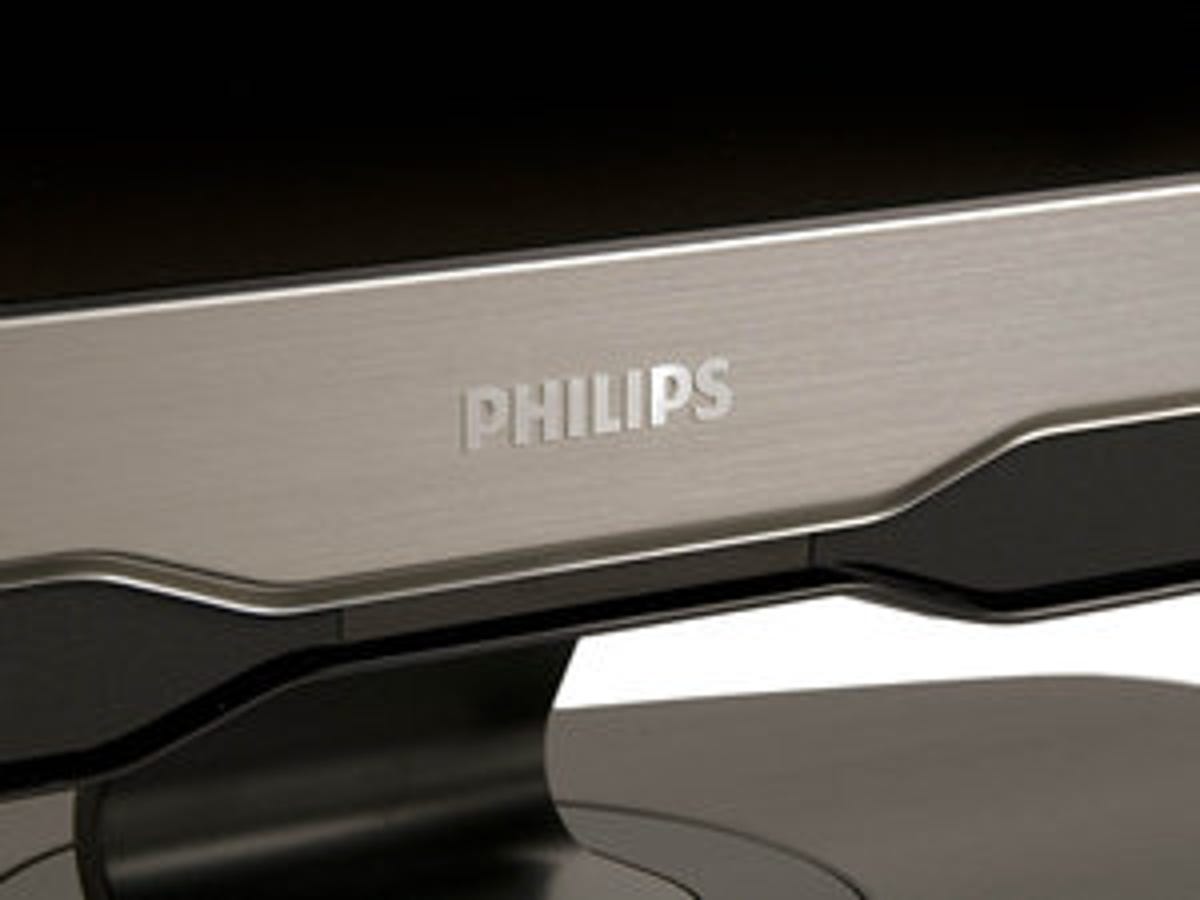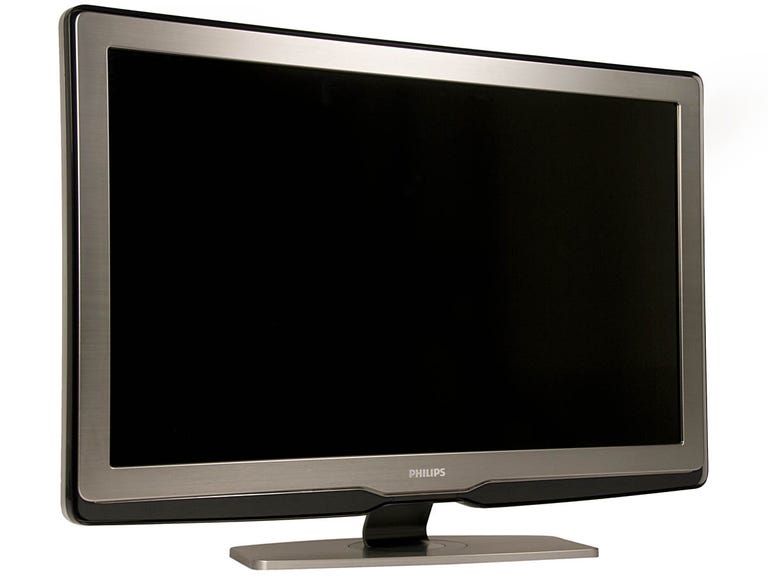 Why You Can Trust CNET
Why You Can Trust CNET Philips 9000 LED Pro (40PFL9704H/12) review: Philips 9000 LED Pro (40PFL9704H/12)
At around £1,800, we think the 40-inch, 1080p, LED-backlit 40PFL9704H/12 LCD TV is too expensive, but, as long as you're good friends with your bank manager, we're happy to recommend this set. Its construction, picture and sound quality, and feature set all scream class
Philips TVs usually leave us in something of a quandary. They're generally very capable sets with an enormous number of useful features. The problem is that these extras come at a pretty high cost, so, while the 40-inch, 1080p 40PFL9704H/12 LED-backlit LCD TV has every extra you could hope for, it also has a price tag that most of us simply won't be able to stretch to -- £1,800.
The Good
The Bad
The Bottom Line
The 40PFL9704H/12 is expensive, but does it earn its keep? Is it the next Pioneer Kuro -- would we sacrifice everything we own for another 5 minutes looking at 1080p footage on its award-winning screen? Let's find out.
What you get for £1,800
Out of the box, we defy you not to be blown away by the look and feel of this TV. Its build quality is second to none. The brushed metal case looks fantastic, and the TV feels like it's been built out of materials that could last forever. The remote matches the glorious style of the TV, and feels like a premium product.

As with most Philips TVs, you'll also find the Ambilight lighting system included here. It's the newer, three-sided system, and we really like it. If you've never owned an Ambilight TV, then you won't know what you're missing, but trust us -- when you have used an Ambilight TV, you'll miss this feature when you watch a TV without it.
On first impressions, then, the TV isn't merely a rip-off -- it's actually a brilliantly designed and constructed set that screams quality. It also has enough features to make us think that perhaps it's worth the price tag.
LED backlights cost a packet
Sadly, it's a fact of TV design and manufacture that LED-backlit sets, particularly fully dimmable models with an array of LEDs behind the screen, cost more to make than normal tellies. The electronics are sophisticated, because the TV not only has to produce an image for the LCD panel, but also calculate which LEDs need to be turned on and which need to be left off at any given time.
Are we defending the price? No, but you can at least see where your money's going. If you see a cheaper TV that has an 'LED backlight', then it's likely that it will use the cheaper edge-light system. In this simpler design, the LEDs are placed at the sides of the TV, and their light is diffused across the rear of the panel using reflectors. This has a cost and size advantage, but it's not possible to finely control the backlight, as it is in locally dimmable screens.
Network connectivity and YouTube
Like many modern TVs, the 40PFL9704H/12 can display video from online services like YouTube, or even over your home network using the DLNA standard. Sadly, we weren't impressed. YouTube worked okay, but video didn't play smoothly --we have a very high-speed network-- and the interface was pretty slow and sluggish.
As for DLNA, we couldn't make it do much at all. It saw our server, and allowed us to browse folders, but, apart from that, we couldn't make it play video. This isn't enough to make us say the TV isn't worth buying, but, if you're interested mainly because of DLNA, think again.
Sound that astounds
Unlike with most LCD TVs, especially thin, LED-edge-lit sets, Philips has taken the time and care to fit proper speakers into the 40PFL9704H/12. With most tellies, you get a flimsy set of speakers that produce a correspondingly thin noise. Philips approaches built-in audio differently, though.
By fitting woofers to the back of the set, and tweeters to the front, Philips has ensured the TV produces an even and high-quality sound. The tweeters aren't left alone to produce noise in one narrow band of frequencies. This also means the tweeters aren't expected to convince us that there are explosions taking place in a movie -- the woofers do that job, and do it well.
Picture quality
We like the sound, but that's only half the story. To get the full, erm, picture, we need to look at what the TV can show our eyes. Like most Philips TVs, the 40PFL9704H/12 has a battalion of picture modes and processing systems. The good news is this particular TV seems to have got everything almost totally right.
In the past, we've criticised Philips TVs for being heavy-handed with their processing. But, try as we did to find fault with this one, we really couldn't discover anything to alarm us. For example, previously we've found that not only does the 'perfect natural motion' system make film look like video, but it also adds a large number of motion artefacts around fast-moving objects. Not so in this iteration. There are some very minor glitches at times, but these won't bother you if you aren't looking for them.
There's still an argument to have about watching films in a mode that makes them look like video. We can't see the likes of Ridley Scott or Francis Ford Coppola turning such a mode on, but, unless you have them over for tea and a movie, that's not likely to bother you. Let's just say that, if you prefer fluid motion, the 40PFL9704H/12 will do a very good job of making your movies look silky smooth.
We also found the picture quality to be excellent in every other regard too. Freeview TV looked very good, with reasonable detail and natural colours. Out of the box, this screen needs plenty of settings tweaks to get it up to the best quality. If that doesn't intimidate you, this TV will reward your efforts with a lovely picture.
Blu-ray movies also look spectacular. At the start of Casino Royale, when the high-grain black and white film is used to give a darker tone, the 40PFL9704H/12 did an excellent job. It removed some of the excessive grain, but only to calm the picture slightly, and the relevant setting is easy to disable if you want the TV to produce a faithful image.
The LED backlight does good things for the contrast too. That said, with the lights off, there was still a glow at times in totally black scenes. We don't know why this occurred, as, when the screen is black, we'd expect the illumination to have been totally cut. This isn't a deal-breaker, though, and this TV is certainly one of the best LCD sets we've seen in terms of its black level.
EPG and menu systems
The new-look Philips menu system is a hit with us too. It's simple to use and customisable. If you want to change what options are available when you press the 'home' button, that's easy to do. This means you can easily switch to your Blu-ray player, or any other device connected to the TV's generous five HDMI inputs.
The electronic-programme-guide function on Freeview was disastrously slow during our testing, though. Pressing the button brought the EPG up quickly enough to start with. The problem came when attempting to navigate through the list of channels. It was like wading through treacle: slow and arduous. The whole process made us tut with frustration and eventually give up. On the plus side, when you change channels, the TV tells you what's showing now and next anyway, so there's a chance you can avoid the EPG for the most part.
Ambilight delight
We've always liked Philips' Ambilight technology. Although, at first glance, it looks idiotic, it really works when you're watching TV in a darkened room. The extension of colour from the screen to the walls is fantastic. At its worst, it just increases the superficial contrast of the image, making blacks seem darker and whites brighter. At its best, it produces a really immersive TV experience that changes the way you watch movies. We're far more impressed by it than we thought we'd be, and the three-sided illumination makes the whole experience even better than before.
Conclusion
When we first turned the Philips 40PFL9704H/12 on, we thought it was going to suffer from the same problems as past models. But the LED backlight performs brilliantly and we were very satisfied with the end result. Its bright images, good colour and amazing detail make this TV a contender for our favourite TV so far this year.
We'll never be happy with the price, though, and we think the TV is far too small for the kind of money you're being asked to pay. Even so, its performance is second to none, and we'd be very happy to suggest you buy it, as long as you're good friends with your bank manager.
Edited by Charles Kloet
